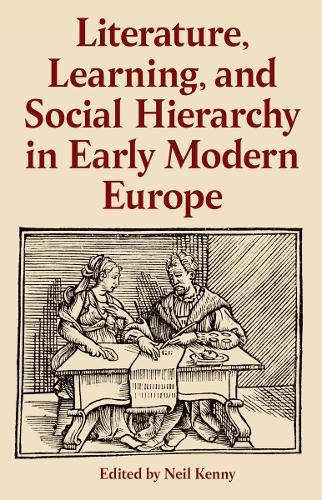The literature and literate knowledge that were produced in Europe from the fifteenth to the seventeenth centuries emanated from societies that were rigidly hierarchical. What difference did that fact make to the literature and literate knowledge? How did social hierarchy shape the production of literature and literate knowledge (by writers, patrons, printers) and their reception (by readers and audiences)? Literature, Learning, and Social Hierarchy in Early Modern Europe is the first book to ask these question of Western Europe, in relation to a wide range of genres, disciplines, practices, and writers. The picture that emerges is of literature and literate knowledge largely bolstering social hierarchies while also questioning at times the very basis on which societies measured the status and worth of their members.





